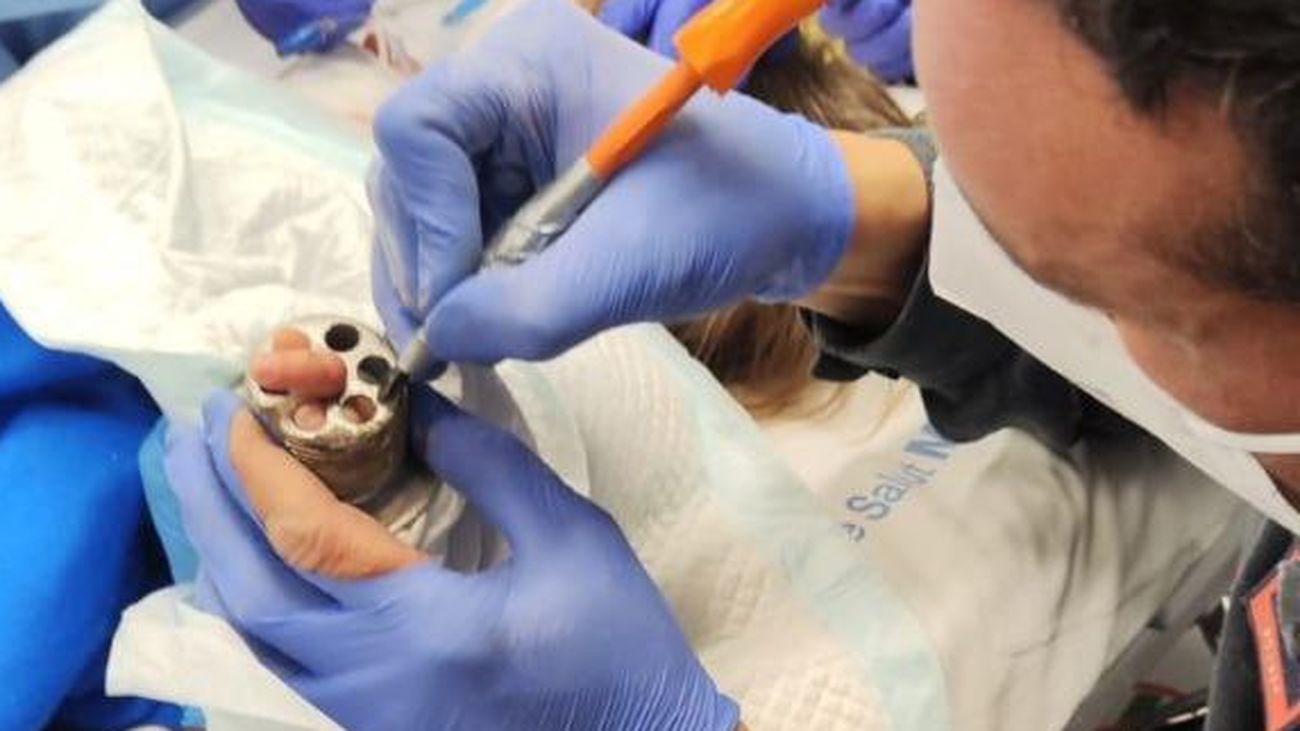Beyond the mask type debate: the fundamental (and often overlooked) question is fit


Masks have featured prominently in the many scientific debates that have arisen in this pandemic. At first the discussion focused mainly on the suitability or not of recommending its use in the general healthy population to reduce coronavirus infections. Months later, the controversy has shifted to which types of masks are most appropriate for different circumstances. Currently, health recommendations on this issue are somewhat disparate at the international level. Thus, while Germany and Austria have recently imposed FFP2 masks as mandatory in places such as public transport or shops and discourage or prohibit cloth masks, many other countries such as Spain, the United States or the United Kingdom do not require the use of masks. specific among the general population.
Recently, the European Health Commissioner, Stella Kyriakides, declared to the media that, regarding the FFP2 masks: "The evidence at the moment is not enough to use them at a general level." This statement came after consulting experts from the European Center for Disease Prevention and Control. It is a position also shared by the CDC, the WHO and the Ministry of Health in Spain.
Apart from the previous debates, the fitting of masks has been a much less prominent issue both by health authorities and by the media. It is, however, an important detail when it comes to curbing infections. Just as the effectiveness of a parachute plummets if it has a large hole, the effectiveness of masks is markedly reduced if they are poorly fitted to the face. Thus, the best FFP2 mask may be less effective than a hygienic one or even a homemade one if there are large gaps between it and the facial contour. Respiratory droplets and especially aerosols can easily pass through these gaps, as various experiments have shown.
It is precisely the wrong fit that is the biggest limiting factor in the effectiveness of FFP2 masks in the real world. In ideal conditions, these masks offer great efficiency (greater than homemade, hygienic and surgical) to filter small particles both from inside and from outside due to their special fabric. However, various studies have shown that most people, including also healthcare professionals, do not make correct use of FFP2 masks to ensure a good fit.
Although its use seems simple, guaranteeing the proper use of the FFP2 may require some training and, on occasions, the facial contour of certain people, the presence of a beard or other factors can prevent a complete fit of these masks. Thus, the effectiveness of these will be reduced proportionally to the size of the gaps between the face and the mask. This could be one of the reasons that may explain why the clinical trials carried out so far do not find significant differences between the efficacy of FFP2 or N95 and surgical masks to prevent respiratory infections.
In recent months, various solutions have emerged to ensure a better fit of various masks to the face and thus increase their effectiveness.
Double mask
For a few weeks, the CDC has been advising the population to combined use of a surgical mask with a cloth over the top. The reason for this is that in several experiments a greater efficacy has been observed when using these two masks together. On the one hand, there is an additional layer that filters the droplets and aerosols. On the other hand, the fabric mask over the surgical one, if it fits well to the face, can reduce the possible gaps that remain between the face and the surgical one.
Front mask adjuster
In recent months, different models of mask frontal adjusters have appeared to avoid the gaps that can be left when using masks such as surgical or cloth. They are flexible pieces that allow a seal to the face when placed on the masks. There are various patented models and also others that can be manufactured free of charge using 3D printing.
Rear mask adjuster / ear guard
The length of the over-ear mask straps is often not ideal to ensure a good fit. Either they are too long and then the mask does not fit the face completely, or they are too short for some people and then continued use can cause rubbing on the ears. To avoid this problem, there are rear adjusters or ear protectors on which to place the mask strips and thus choose the most appropriate setting for each person.
Knots in the strips of surgical masks
It has been proven that if knots are tied in the strips of surgical masks, as close as possible to the part of the mask, a better fit is achieved in the lateral parts, thus avoiding the gaps that usually appear in these areas in some people .
Nylon Stocking Trimmed Over Face Mask
It is not a particularly elegant solution, but it is an effective and cheap resource for increase the fit of the mask to the face and increase its protective efficacy. Furthermore, it cannot be ruled out that using this option increases the chances that people around you will comply with the safety distance.
Elastomeric masks
In recent months, new models of elastomeric masks, more affordable and compact, that allow a comfortable fit to the face thanks to the fact that they have silicone or similar materials on the edges. In addition, they are reusable, since the filters can be changed after using them for a defined time. It is important to be well informed when purchasing them because, as with the FFP2 or N95 masks, it is very easy to find counterfeits on the market.










